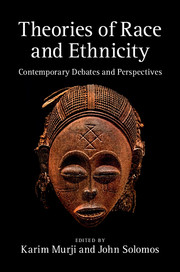Silencing Race: Disentangling Blackness, Colonialism, and National Identities in Puerto Rico by Ileana Rodríguez-Silva (review)
The Americas
Volume 72, Number 4, October 2015
pages 655-657
Isar Godreau, Researcher
Interdisciplinary Research Institute
University of Puerto Rico, Cayey
Rodríguez-Silva, Ileana M., Silencing Race: Disentangling Blackness, Colonialism, and National Identities in Puerto Rico (London, New York: Palgrave Macmillan, 2012).
In Silencing Race, Ileana Rodríguez offers a much-needed historical exploration of the silences about “race” embedded in political and public discourses about Puerto Rico. The book is divided in two parts that cover the years from 1870 to 1910. The first part is dedicated to the later years of the Spanish colonial regime, the second to the first years under US colonial rule. Rodríguez-Silva demonstrates how different class and political interests during both these periods converged to subordinate the issue of racial inequality to issues of class and national identity. She argues that class, not race, became the key category through which demands for rights and political participation were made and recognizes the varying perspectives of creole elites, former slaves, union organizers, politicians, and US labor unions. The author also explains the historical conditions that supported such silencing of racial issues and demonstrates why voicing a racialized sense of self or denouncing racism had complex and multifaceted political consequences. On the one hand, politicians sought to gain the electoral support of the predominantly black and expanding labor movement. Aware as they were of the close relationship between race and class, they often accused political rivals of being racist for not attending to workers, needs for economic uplift and equity. On the other hand, blackness and associated popular expressions of poor working-class folk were considered backward by the criollo leadership, who also limited participation of black males in party decisions.
Rodríguez-Silva argues further that a politicized black identity was associated with unrest and the anticolonial movements that had taken place in Haiti and the rest of the Caribbean, including Cuba with its 1912 race war and massacre against the black members of the Partido Independiente de Color. Explicit debates about racism were also inconvenient for political elites who wanted to project themselves to metropolitan authorities as illustrious men in charge of a multiracial society free of racial conflict. During the years of Spanish colonialism, evading the issue of racism and making claims to racial harmony proved Puerto Ricans’ capacity to renegotiate the relationship with Spain as equals (not as separatists).
Undermining racial conflict was also important for maintaining key political alliances between white criollos, artisans, and the working class. As a US colony, making claims to racial harmony proved the local elite’s capacity to negotiate the colonial relationship with the racially segregated United States. An explicit racialized discourse also stood at odds with US colonial representatives with whom annexationists, socialists, and labor union leaders were trying to negotiate better wages, employment opportunities, legal protection, and US citizenship. Hence, Rodríguez-Silva shows how, despite major ideological and class differences, politicians, intellectuals, and labor organizers sought to deracialize their politics. The book explores the silence around issues of race and racial inequality across various geographical areas, but offers the most substantive material on Ponce, its political parties, artisans’ associations, regional publications, and other aspects of public life.
The book’s introduction provides a sophisticated analysis of the role of silence in these processes. The author theorizes silence as the attempt to shape or prevent racial talk as a strategy and tool of oppression, but also as a strategy of the oppressed for survival. She persuasively argues that silence also communicates. However, defining what exactly is being silenced in the historical sources analyzed or defining her expectations for “noise” could have improved the analysis. For Rodríguez-Silva, “noise” (or the opposite of silence) seems to mean the explicit discourses that condemn racism, draw attention to Puerto Rican blackness, or call for organizing around a racialized subjectivity. Yet “race” can also encompass whiteness, whitening, racial harmony, racial mixture, or euphemisms such as “de color.”
These terms do not necessarily represent a silencing of race, but they do imply a silencing of some specific formulations of race, for example, black identity. As such, they can be understood as a deployment of race to silence other specific formulations of race. This unspoken notion of “race talk” or “racial noise” makes the overall theoretical argument about silencing less focused than one would like. It also presents what is being suppressed as an inherently “natural” thing that exists out…
Read the entire review here.





